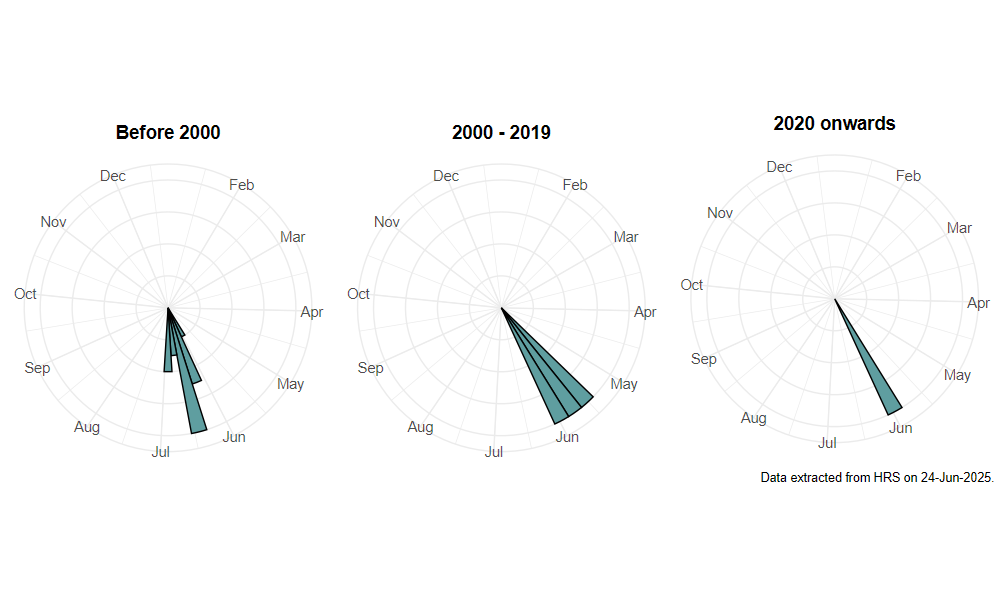Cheilosia sahlbergi Becker, 1894
Identification
Identification difficulty = 4. ![]()
![]() according to Ball & Morris, 20241
according to Ball & Morris, 20241
Biology
The larva appears to be associated with Alpine Bistort Polygonum viviparum, where it may graze roots externally. Adults occur at high altitude (700m upwards) and have been recorded visiting the flowers of Tormentil Potentilla erecta and Saxifraga spp. usually near water. They fly low and rapidly over the vegetation often perching on sun-lit stones and rocks in sheltered spots.
Flight period
The following plots show the number of unique records per week excluding those reported to be of immature stages.

Status
VULNERABLE - Ball & Morris, 20142. Vulnerable (RDB2) - Falk, 19913. Rare (RDB3) - Shirt, 19874.
Distribution
Restricted to mountainous areas of northern Scotland especially parts of the Cairngorms and Perthshire. Since this is a habitat that is visited infrequently by entomologists and occasions when the weather is suitable to find adults are rather restrictive, it is probably under recorded. Species distribution modelling suggests that this is one of the species most vulnerable to climate change.

-
Ball, S., & Morris, R. (2024). Hoverflies of Britain and Ireland. WILDGuides (3rd ed.). Oxford: Princeton University Press. ↩
-
Ball, S., & Morris, R. (2014). A review of the scarce and threatened flies of Great Britain. Part 6: Syrphidae. ( No. 9). Species status (pp. 1–130). Peterborough: JNCC. ↩
-
Falk, S. (1991). A review of the scarce and threatened flies of Great Britain. ( No. 39). Research and Survey in Nature Conservation (pp. 1–194). Peterborough: NCC. ↩
-
Shirt, D. (Ed.). (1987). Red Data Books: 2. Insects. Peterborough: NCC. ↩